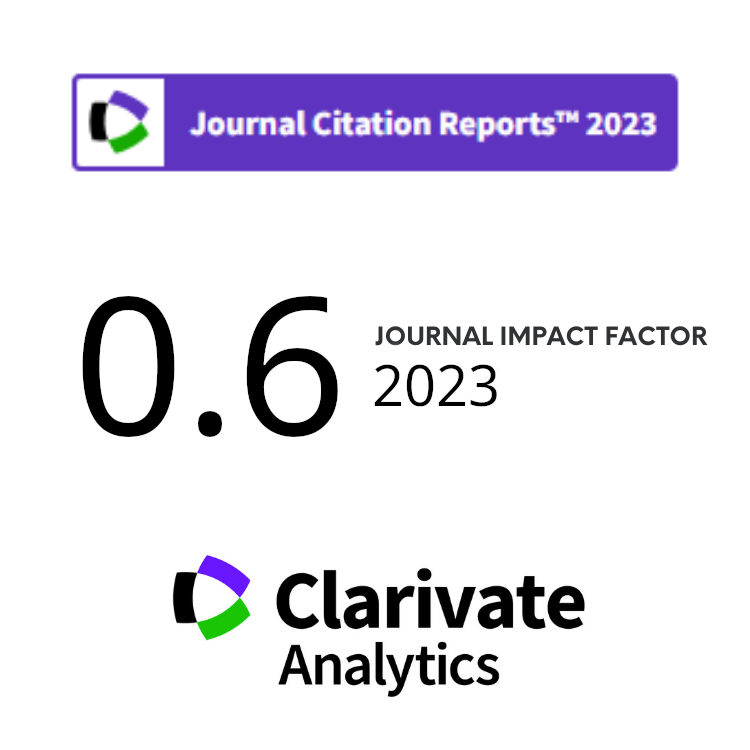Optimization of Electrodeposition Parameters to Increase 99mTc Radioactive Concentration
Abstract
The use of low activity concentration 99mTc would result in low-quality labeled compound for diagnostic purpose. The low activity concentration of labeled compound will alter biodistribution and lead to false imaging in diagnostic applications. Electrodeposition could be an alternative method for increasing the activity concentration of 99mTc solution. The influence of electrodeposition parameters such as electrolytes, concentration of electrolyte, and voltage and time of deposition were examined to find the optimum condition for electrodeposition. Electrolytes to be evaluated were NaNO2, Na-oxalate, NaOH, and NaCl. Concentration factor is defined by ratio of final against initial concentration of 99mTc. The quality assessment of 99mTc after electrodeposition was conducted by labeling test of methylene diphosphonate (MDP) and 1,4,8,11-tetraaza cyclotetradecyl-1,4,8,11-tetramethylene phosphonic acid (CTMP). The results showed that the addition of NaNO2 electrolyte gave the highest electrodeposition yield in comparison with Na-oxalate, NaOH, and NaCl, while the optimum concentration of electrolytes was 0.67 M. The optimum depostion voltage and duration were 7 V and 90 minutes, respectively. The electrodeposition yield was 96 % under optimized condition with a concentration factor of up to 7.96. In the quality assessment, MDP and CTMP were successfully labeled by concentrated 99mTc to give 99mTc-MDP and 99mTc-CTMP labeled compounds with radiochemical purities of more than 95 %.
Received: 2 November 2015; Revised: 14 July 2016; Accepted: 3 October 2016
Keywords
Full Text:
PDFDOI: https://doi.org/10.17146/aij.2017.618
Copyright (c) 2017 Atom Indonesia

This work is licensed under a Creative Commons Attribution-NonCommercial-ShareAlike 4.0 International License.











